In This Short Film, The Macro Room Team Plays With The Diffusion Of Ink In Water And Its Interaction
In this short film, the Macro Room team plays with the diffusion of ink in water and its interaction with various shapes. Injecting ink with a syringe results in a beautiful, billowing turbulent plume. By fiddling with the playback time, the video really highlights some of the neat instabilities the ink goes through before it mixes. Note how the yellow ink at 1:12 breaks into jellyfish-like shapes with tentacles that sprout more ink; that’s a classic form of the Rayleigh-Taylor instability, driven by the higher density ink sinking through the lower density water. Ink’s higher density is what drives the ink-falls flowing down the flowers in the final segment, too. Definitely take a couple minutes to watch the full video. (Image and video credit: Macro Room; via James H./Flow Vis)

More Posts from Hannahhaifisch and Others



How spheres impact water has been studied for more than a century. The typical impact for a rigid sphere creates a cavity like the one on the upper left - relatively narrow and prone to pinching off at its skinny waist. If the sphere is elastic –squishy – instead, the cavity ends up looking much different. This is shown in the upper right image, taken with an elastic ball and otherwise identical conditions to the upper left image. The elastic ball deforms; it flattens as it hits the surface, creating a wider cavity. If you watch the animations in the bottom row, you can see the sphere oscillating after impact. Those changes in shape form a second cavity inside the first one. It’s this smaller second cavity that pinches off and sends a liquid jet back up to the collapsing splash curtain.
From the top image, we can also see that the elastic sphere slows down more quickly after impact. This makes sense because part of its kinetic energy at impact has gone into the sphere’s shape changes and their interaction with the surrounding water.
If you’d like to see more splashy stuff, be sure to check out my webcast with a couple of this paper’s authors. (Image credits: top row - C. Mabey; bottom row - R. Hurd et al., source; research credit: R. Hurd et al.)


Manganese Dendrites on Limestone
Locality: Solnhofen, Bavaria, Germany

Another Ferrofluid representation

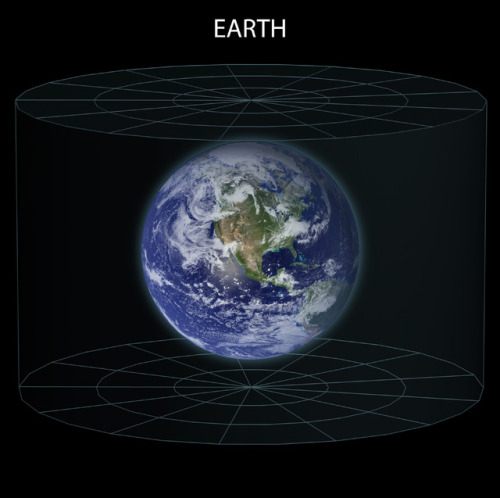
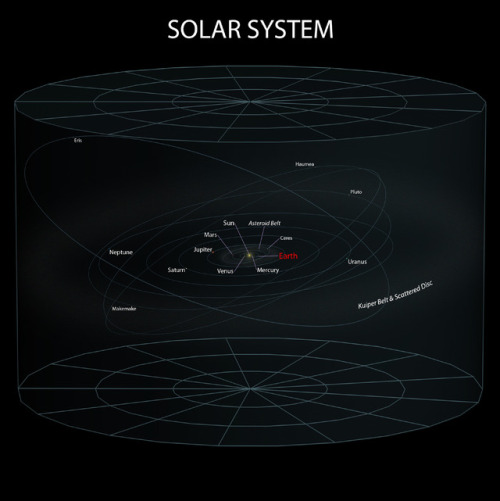
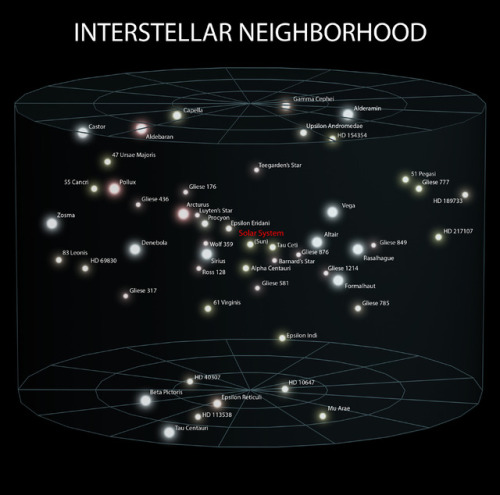

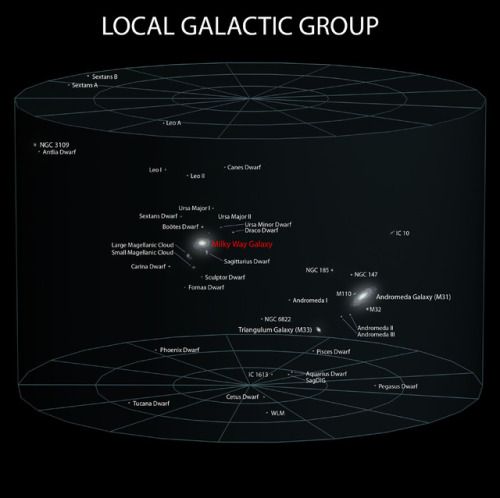
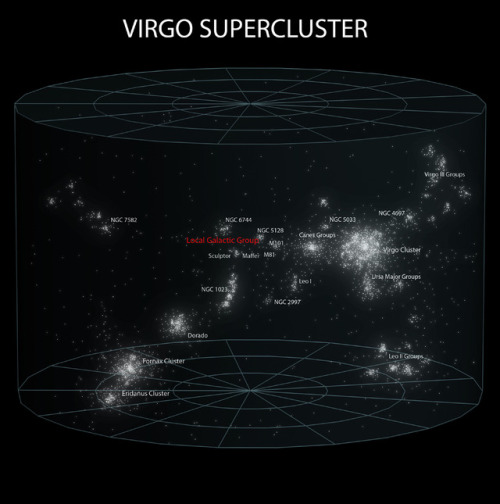
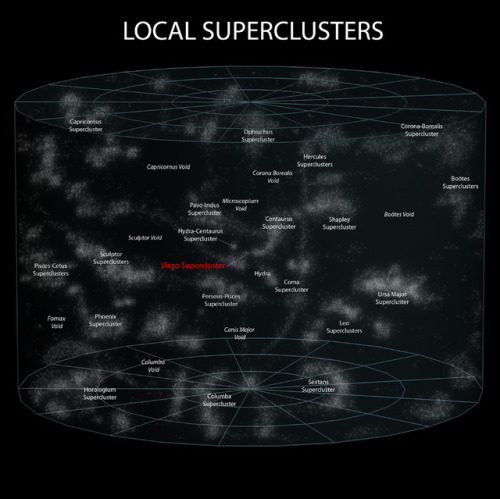
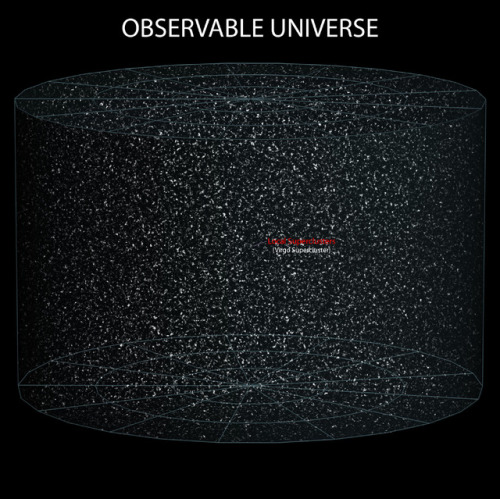
~ wikimedia commons


Stretching SpaceTime
According to general relativity, the sun’s mass makes an imprint on the fabric of spacetime that keeps the planets in orbit. A neutron star leaves a greater mark. But a black hole is so dense that it creates a pit deep enough to prevent light from escaping.
Image credit: James Provost






‘Antique Adventures’ limited edition screenprint set
https://player.vimeo.com/video/129003674
Hannah Reber, "Fragezeichen V4", 2015, part of multiple-screen video installation

Hexagons and rhombis spreading out

Limited Short Term Memory Caused by Interference From Similar Items Seen Earlier
Our short-term memory is severely limited in everyday experience, but according to a new study from City, University of London and the Hungarian Academy of Science, it has no intrinsic limits when it comes to remembering information.
The research is in Psychological Review. (full access paywall)
-
 techjum reblogged this · 5 years ago
techjum reblogged this · 5 years ago -
 spinpink reblogged this · 6 years ago
spinpink reblogged this · 6 years ago -
 2fas4me2 liked this · 7 years ago
2fas4me2 liked this · 7 years ago -
 sohowareyoudo99 liked this · 7 years ago
sohowareyoudo99 liked this · 7 years ago -
 lostliketearsintherain liked this · 7 years ago
lostliketearsintherain liked this · 7 years ago -
 vitrify reblogged this · 7 years ago
vitrify reblogged this · 7 years ago -
 tinmiss reblogged this · 7 years ago
tinmiss reblogged this · 7 years ago -
 incubiboi liked this · 7 years ago
incubiboi liked this · 7 years ago -
 scribblings-of-a-madcap reblogged this · 7 years ago
scribblings-of-a-madcap reblogged this · 7 years ago -
 iamacrystalgem reblogged this · 7 years ago
iamacrystalgem reblogged this · 7 years ago -
 camillahect liked this · 7 years ago
camillahect liked this · 7 years ago -
 crossmydna reblogged this · 7 years ago
crossmydna reblogged this · 7 years ago -
 iamacrystalgem liked this · 7 years ago
iamacrystalgem liked this · 7 years ago -
 majorzagar liked this · 7 years ago
majorzagar liked this · 7 years ago -
 datablogger liked this · 7 years ago
datablogger liked this · 7 years ago -
 syfien reblogged this · 7 years ago
syfien reblogged this · 7 years ago -
 sylver-byrd liked this · 7 years ago
sylver-byrd liked this · 7 years ago -
 queerbabybird reblogged this · 7 years ago
queerbabybird reblogged this · 7 years ago -
 captainblucifer reblogged this · 7 years ago
captainblucifer reblogged this · 7 years ago -
 captainblucifer liked this · 7 years ago
captainblucifer liked this · 7 years ago -
 ateezlovingbookworm liked this · 7 years ago
ateezlovingbookworm liked this · 7 years ago -
 hyperbolicgrinch reblogged this · 7 years ago
hyperbolicgrinch reblogged this · 7 years ago -
 cosmetreee liked this · 7 years ago
cosmetreee liked this · 7 years ago -
 aquaticwithnumbers reblogged this · 7 years ago
aquaticwithnumbers reblogged this · 7 years ago -
 aquaticwithnumbers liked this · 7 years ago
aquaticwithnumbers liked this · 7 years ago -
 tristenmingle liked this · 7 years ago
tristenmingle liked this · 7 years ago -
 garbagewife liked this · 7 years ago
garbagewife liked this · 7 years ago -
 hyperbolicgrinch liked this · 7 years ago
hyperbolicgrinch liked this · 7 years ago -
 moggettt reblogged this · 7 years ago
moggettt reblogged this · 7 years ago -
 syfien liked this · 7 years ago
syfien liked this · 7 years ago -
 sylphinspired reblogged this · 7 years ago
sylphinspired reblogged this · 7 years ago -
 thedevilsunderstudy reblogged this · 7 years ago
thedevilsunderstudy reblogged this · 7 years ago -
 sorrowatthename reblogged this · 7 years ago
sorrowatthename reblogged this · 7 years ago -
 paperwick liked this · 7 years ago
paperwick liked this · 7 years ago -
 goma999 reblogged this · 7 years ago
goma999 reblogged this · 7 years ago -
 shimmertsukki liked this · 7 years ago
shimmertsukki liked this · 7 years ago -
 eggscelsior liked this · 7 years ago
eggscelsior liked this · 7 years ago -
 scribblings-of-a-madcap liked this · 7 years ago
scribblings-of-a-madcap liked this · 7 years ago -
 washmyghost liked this · 7 years ago
washmyghost liked this · 7 years ago -
 1c4nn0tth1nk0f4us3rn4m3 liked this · 7 years ago
1c4nn0tth1nk0f4us3rn4m3 liked this · 7 years ago -
 moggettt liked this · 7 years ago
moggettt liked this · 7 years ago -
 smiledoughnut liked this · 7 years ago
smiledoughnut liked this · 7 years ago -
 squirrelbread reblogged this · 7 years ago
squirrelbread reblogged this · 7 years ago -
 squirrelbread liked this · 7 years ago
squirrelbread liked this · 7 years ago